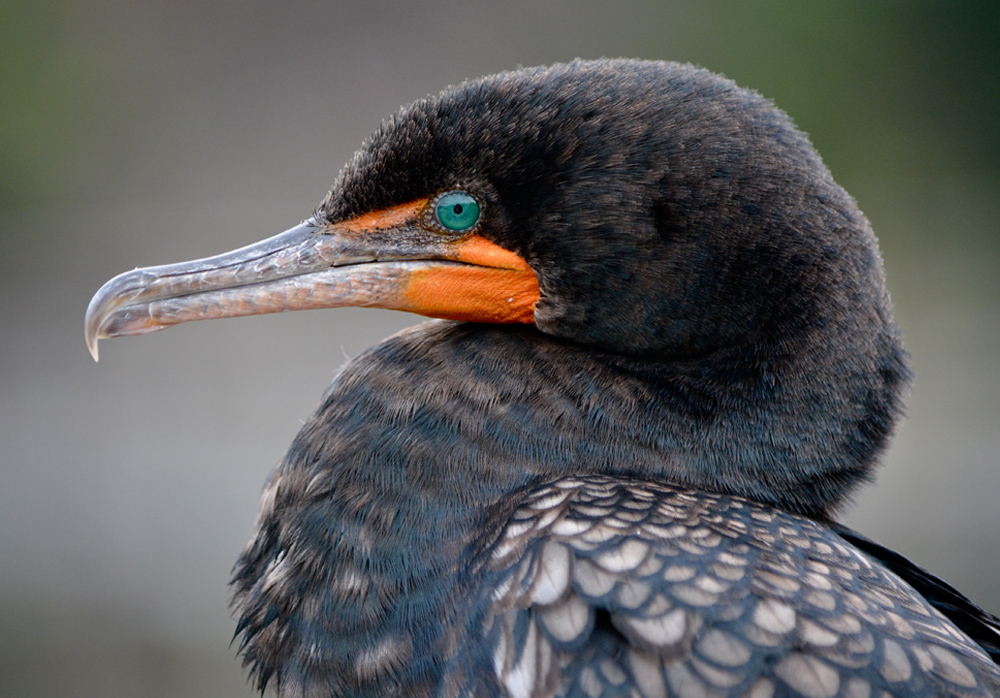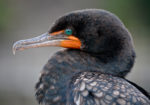
June’s Bird of the Month is the Double-crested Cormorant, and here is the article in the upcoming June 2018 Kite written by Clive and Celecia Pinnock.
June Bird of the Month – Double-crsted Cormorant
By Clive & Celecia Pinnock
The Double-crested Cormorants (Phalacrocorax auritus) are large water birds that are often confused with Anhingas due to their closeness in appearance, wing-spreading habits and occasional foraging in the same freshwater locations. The Double-crested Cormorants (which rarely look noticeably crested in the field) differ in appearance, however, by their stocky stature, medium-length tail, thick neck, and hooked bill (compared to the Anhinga’s slender stature, longer fan-shaped tail and dagger-like bill). Cormorants also have a yellow to orange gular (throat) pouch.
The Double-crested Cormorant is North America’s most widespread and familiar cormorant and is found in both marine and freshwater habitats. These habitats include lakes and rivers, marshes, coastal estuaries, bays and offshore islands. Cormorants are gregarious by nature and nest colonially on rocky cliffs or sandy substrates as well as marsh vegetation, mangrove swamps and artificial structures.
The cormorant’s diet is varied, primarily consisting of more than 250 different species of fish, but also including insects, crustaceans (crabs, shrimp, and crayfish), amphibians, (frogs, salamanders) and, occasionally, snakes, mollusks, and plant material. Their foraging technique involves diving and chasing fish underwater with powerful propulsion from their webbed feet. After feeding, cormorants often go to a nearby stump, dock, rock-outcropping or piling to dry their water-logged feathers, a behavior also seen in Anhingas. They do this by extending their outstretched wings to absorb the drying effects of the sun’s rays. This behavior compensates for the ineffectiveness of their oil-gland to produce enough oil to prevent their feathers from becoming waterlogged. In flight, cormorants often travel in V- formations that shift and re-form as they alternate bursts of erratic flapping and short glides.
Photographers – please note that next month’s July bird of the month is the RED KNOT.
Please check out the picture by Susan Faulkner Davis in the June KITE cover and to see the slide show of the entire virtual gallery this month, along with photographer etc — click on BOM SLIDE SHOW below the pictures displayed here:
[flickr_set id=”72157696517287684″ max_num_photos=”100″]
BOM SLIDE SHOW – June 2018 Bird of the Month – Double-crested Cormorant


Comments are closed